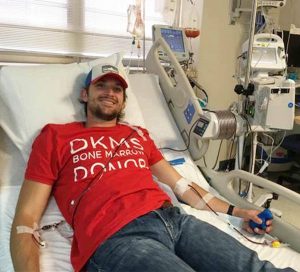The Myths About Bone Marrow Donation
Over the years, lots of things have changed about bone marrow donation. Advancements in medicine and technology have made it easier than ever to save someone’s life. And for many blood cancer patients, a matching bone marrow donor is their only hope of a cure. Donation might be seem like a nerve-racking procedure, but There Goes My Hero is dedicated to deconstructing the most common myths of bone marrow donation in order to encourage individuals to join the registry. Here are five common myths about bone marrow donation.
Your information will become public.
Many potential registrants are concerned with how their biological data will be used, who they may be asked to donate to, and whether this information will become public. All donor health information and data is kept confidential in accordance with HIPAA laws. If you are selected as a match, the patient’s health information is also kept confidential. Your information will only be released to the patient if and when you decide to do so.
Donating is dangerous.
Almost all medical procedures come with possible side-effects. Bone marrow donation is no different, although the effects are rather minor. Donors may experience flu-like symptoms such as headaches, body aches, fatigue, nasusae, or soreness, but they will subside after a short amount of time. After 1 to 7 days of rest, donors are able to return to their regular activities, including work and school. Your bone marrow completely replenishes itself with three to six weeks.
The procedure is invasive.
There are two methods of donating, and they are both safe, outpatient procedures. These methods are called peripheral blood stem cell (PBSC) donation and bone marrow (BM) donation. Stem cell donation is a non-surgical outpatient procedure in which blood stem cells are collected via the bloodstream. Similar to donating platelets, the blood is taken out of one arm, the blood stem cells are removed, and the remaining blood is returned to the donor. This non-invasive procedure is becoming progressively common as it is used in over 75% of donations. The second method only occurs about 25% of the time, where the donor undergoes a 1-2 hour surgical procedure under anesthesia. In this case, a syringe is used to collect bone marrow cells from the back of the donor’s hip bone — not from the spine.
Donating is painful.
Most donors will experience some level of discomfort, but no feeling will ever match the one of saving someone’s life. The positive feelings, in addition to the love and support of your family and friends, easily masks any pain one might endure when donating bone marrow. Donors may experience some discomfort, bruising, and stiffness following the donation, but the side effects usually last no more than two weeks.
Donating is time consuming and expensive.
If you are matched, you will need to travel to one of the numerous accredited hospitals authorized to host the bone marrow donation. This may require air travel, but all travel expenses are covered by our partner, DKMS. The process takes a total of 30-40 hours over a 4-6 weeks period, which includes attending doctors appointments, getting a physical exam, and the actual donation itself. This might result in needing to take some time off from work or school, but DKMS also provides a lost wage compensation program for eligible donors.
All donors have different experiences, but just remember that bone marrow donation is safe, easy, and most importantly, life-saving! If you have any further questions or concerns, please feel free to email stephanie.cupp@theregoesmyhero.org. Join the registry today to be someone’s cure.

